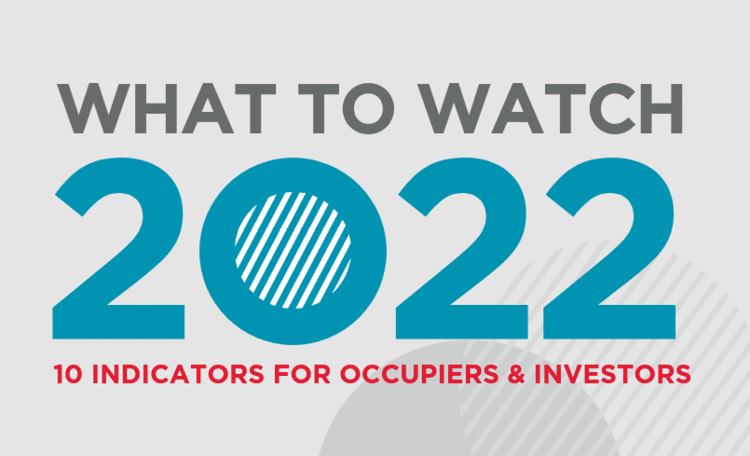Cushman & Wakefield’s 2022 Signal Report shows that recovery in all regions and sectors of the global real estate market will hit a new record in 2022. In this global report, our Global Head of Capital Markets Insights and Head of Investment Strategy for EMEA Capital Markets provide a quarter-by-quarter guide to investments in Commercial Real Estate (CRE) in 2022.
Key Takeaways:
- Activity in the global real estate market hit a new record in 2021 with a stunning Q4 that drove an annual increase of 55%. Demand will be just as strong this year and while rising rates, geopolitical tensions and finding the right opportunities will remain an issue, activity in the first half of the year could yet exceed 2021 and a 3% uplift is forecast for the year overall.
- Uncertainty will add to the weight of money targeting liquid, core safe-haven markets but could also somewhat delay the rise in interest rates so widely expected and feared in the market. What is more, this comes against a still favorable backdrop for real estate in terms of the dynamics of investor demand and the structural shifts driving the need for more or different space.
- The occupier market’s recovery will be slowed by uncertainty and the persistence of COVID-19, but in no way stopped. Indeed, while capital markets are leading the recovery, occupiers will be driving performance as economic activity, jobs growth and a focus on talent and innovation drive the imperative to get real estate right, resulting in renewed demand, rent inflation and further disparity between good and average assets.
- What constitutes the “right asset” is evolving due to structural changes within technology and talent, as well as a brighter spotlight on ESG considerations. Many older assets are still relevant however and much of what worked pre-pandemic will still work as market health returns.
- Inflation will continue to pressure global interest rates, though markets have already priced in significant monetary tightening. While the yield gap is closing, real estate will remain attractive thanks to its relative income and potential for the right assets to act as an inflation hedge.
- A return to the old normal is not apparent and the shift from the pandemic is slower than anticipated due to the Omicron variant and the fact that businesses are taking advantage of this time to rethink how they operate and use space.
- Sheds, beds, meds and niche assets will see a further increase in allocations – growing from a position of immaturity in some regions – while more traditional sectors offer a key route to access stock due to scale. However, investors must approach all sectors via a range of structures and capital routes to find opportunities and take advantage of all performance potential.
- As a result of new user patterns and a demand for greater sustainability, reworking existing stock and building more effectively will be a priority – and an opportunity – on a global basis, especially in core markets with less focus on ESG to date.
- The longer-term redesign of supply chains will refocus demand in all regions as well as capitalize on growth in low-cost emerging markets globally.
To learn more, download your copy of The Signal Report: Global Guide to CRE Investing in 2022.




